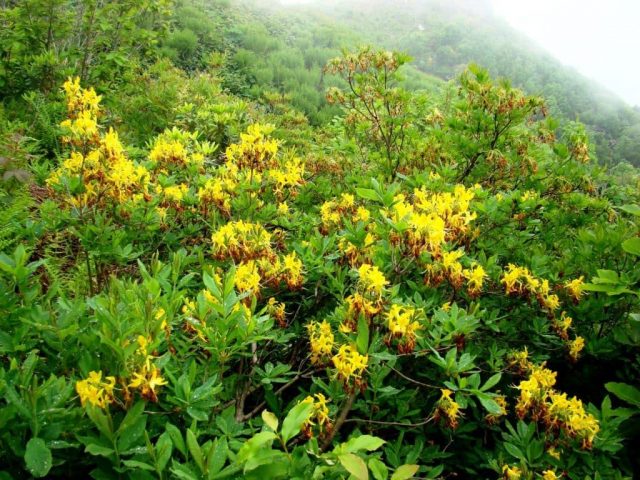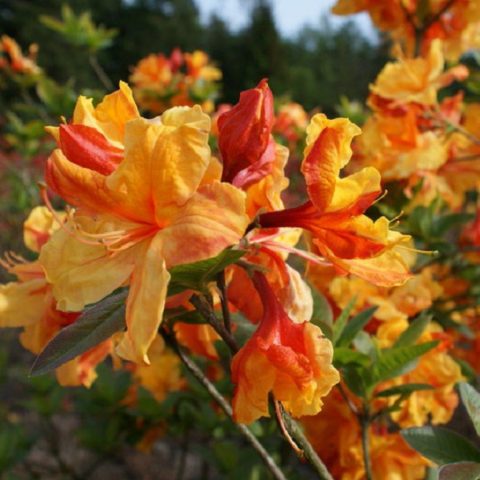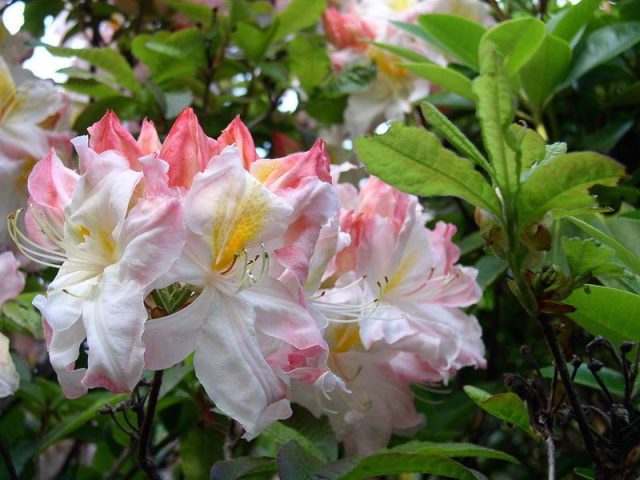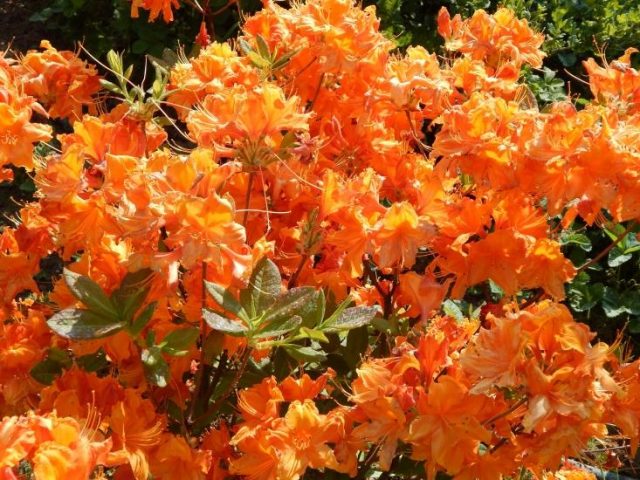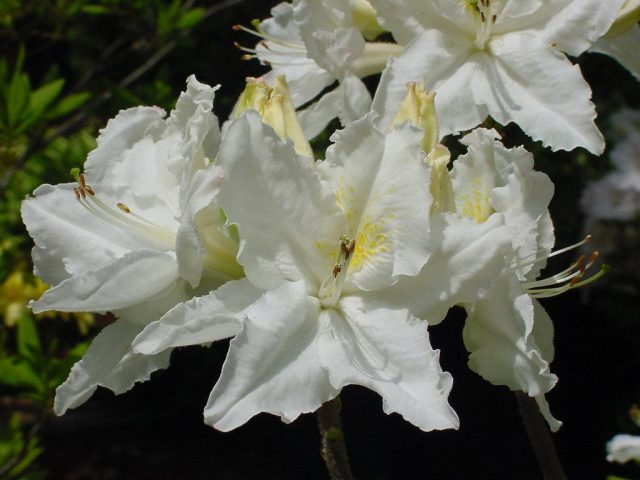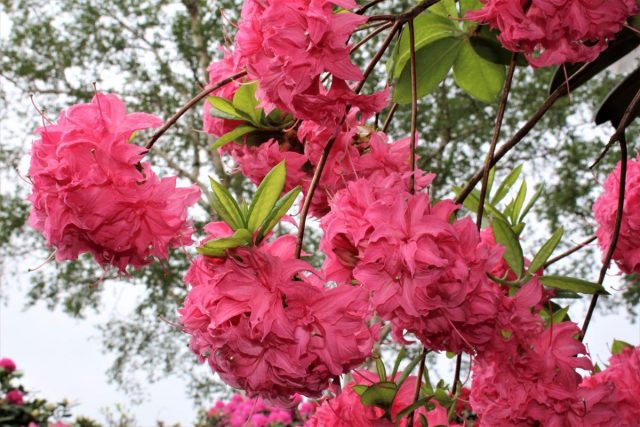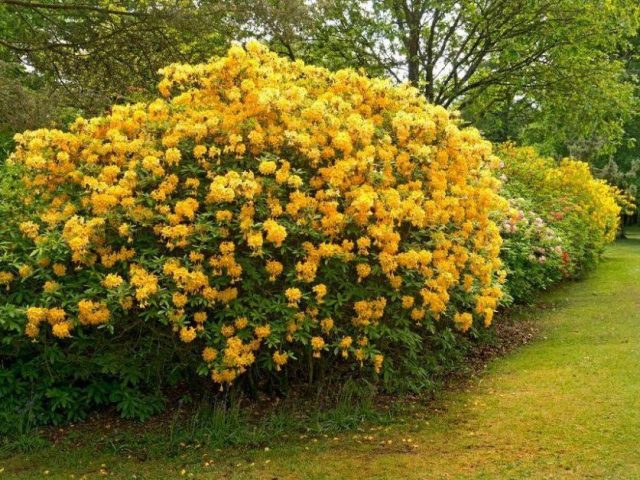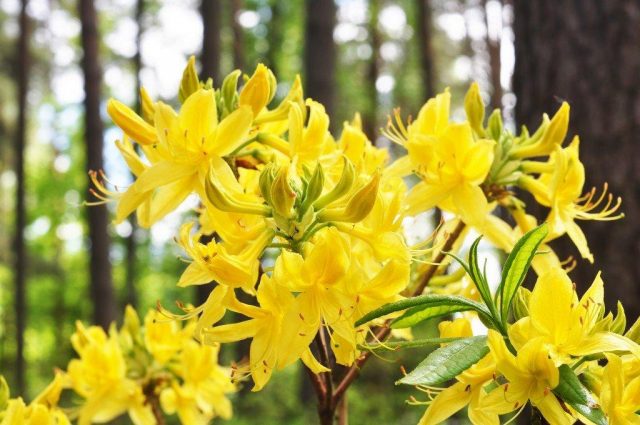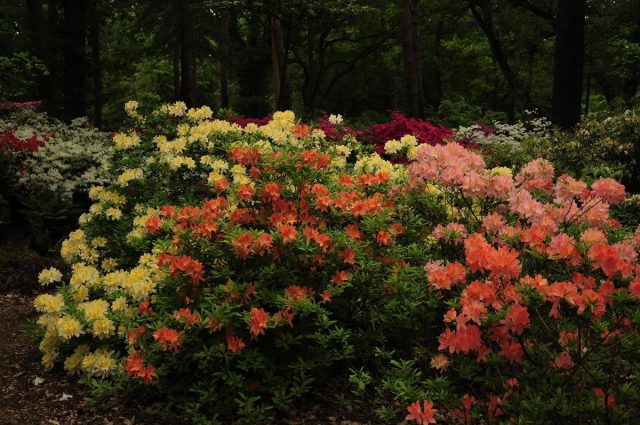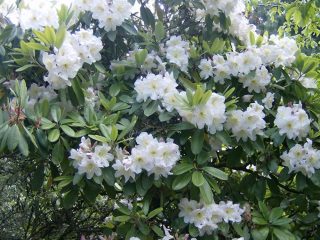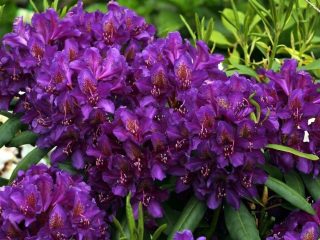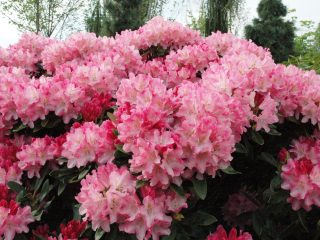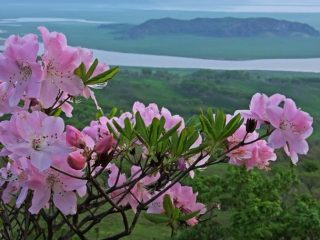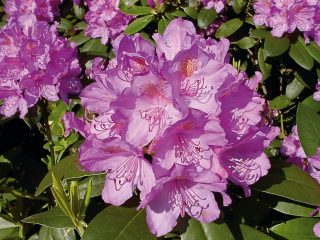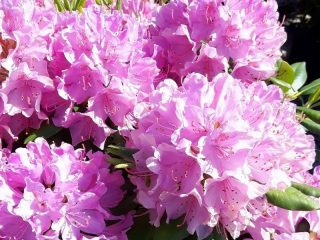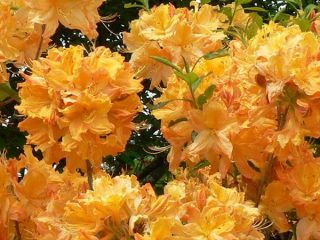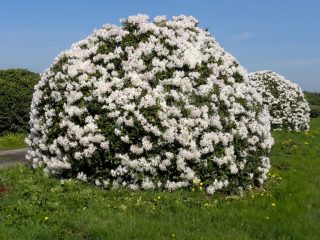Content
Yellow rhododendron is a spectacular flower that will become a real decoration of the garden. Planting and caring for a plant has a number of nuances. If agricultural practices are followed, the crop develops well, does not get sick and produces lush inflorescences.
Description of yellow rhododendron
Yellow rhododendron, or Pontic azalea, is a deciduous shrub of the Ericaceae family. It is found in nature in Ukraine, Belarus, the southern regions of Russia, Eastern Europe, the Caucasus and Asia Minor. The culture prefers forest edges, undergrowth, clearings, and wetlands. Most often it grows at an altitude of no more than 2000 m above sea level.
The shrub up to 4 m high branches well and grows quickly. The girth of the plant is up to 6 m. Its leaves, located on petioles up to 5 mm, are oblong, elliptical in shape, up to 12 cm long and up to 8 cm wide. The leaf plate is pointed at the tip and narrowed near the base. Along the edges it is ciliated, with small notches.The leaves are green in summer and turn yellow, red or orange in autumn.
The flowers of the plant are located on a peduncle 2 cm long and are collected in umbrella-shaped shields of 7 - 12 pieces. The corolla is yellow, sometimes with an orange tint, and contains a narrow cylindrical tube. Flowers appear before or during leaf bloom. Closer to August, the fruits ripen. They look like a cylindrical box up to 3 cm long, filled with seeds.
The first flowers appear on plants older than 5 years. In the middle zone, the buds bloom in late May or early June. The flowering period is extended in time, as it occurs in several stages. The flowers have a strong aroma. The leaves of the plant bloom in mid-June. Already in July they change color, and in October they fall off. The minimum growth of shrubs per year is 8 cm, the maximum is 25 cm.
What is yellow rhododendron useful for?
Yellow rhododendron has not found use in folk medicine. All parts of the plant are poisonous. They contain andromedotoxin, a toxic organic compound that is dangerous to people and animals.
When the substance enters the body, it disrupts the functioning of cellular receptors. First, the work of the central nervous system is stimulated, after which sweating increases, vomiting, weakness, and dizziness occur. After the toxin enters the body, negative symptoms appear within a period of several minutes to 3 hours.
Most often, yellow rhododendron causes poisoning in domestic animals that eat the plants. This nuance is taken into account when planting shrubs.Honey obtained from the flowers is also poisonous to bees and mammals.
Varieties of yellow rhododendron
Many hybrids and garden forms have been developed based on yellow rhododendron. They are distinguished by decorative properties that surpass the original appearance. The plant has been known in cultivation since the end of the 18th century.
Popular varieties of yellow rhododendron:
- Santa Nectarine. A hybrid up to 18 m high and up to 1.2 m wide. Its shoots are vertical and densely spaced. Inflorescences appear at the ends of the shoots. Each of them contains 6 - 12 buds. The flowers of the variety are golden yellow, with red petals on the outside. Winter hardiness of the variety - up to -25 °C;
- Rhododendron yellow Sylphides. Shrub height from 1 to 3 m. The crown of the plant is round, the leaves are shiny, green. The inflorescences consist of 8 - 14 flowers, the petals of which are white-pink with a yellow spot, up to 9 cm in size; Important! The Silfides variety is one of the most frost-resistant, it can withstand cold temperatures down to -32 °C.
- Glowing Ambers. The plant is up to 1.5 m high. Its flowers are orange in color, collected in spherical inflorescences. The first buds appear at the end of May. Their aroma is delicate and pleasant. The foliage of the crop is bright green, turning red in autumn. The shrub does not freeze when the winter temperature drops to -30 °C;
- Oxidol. A shrub up to 1.2 m high. The variety has star-shaped flowers, consisting of 5 snow-white petals. They are collected in inflorescences of 6 - 10 pieces. There is a light yellow spot on the upper petal. The size of the flowers is up to 9 cm. The aroma is light and pleasant. In autumn the foliage turns dark red. Withstands cold temperatures down to -24 °C;
- Rhododendron yellow homebush. Dense shrub 1.5 - 2 m high with straight shoots.It has double carmine-pink flowers collected in spherical inflorescences. The young leaves of the plant are bronze, turning dark green in summer. In autumn the foliage turns crimson and orange. Frost resistance of the bush is up to – 25 °C.
Conditions for growing yellow rhododendron
Yellow rhododendron is suitable for growing in the middle zone, the North-West, the Urals, Western Siberia, and the Far East. The shrub tolerates winters well under cover. For planting, choose frost-resistant varieties that can withstand even difficult climates.
Ideal conditions for growing yellow rhododendron:
- sunny place or partial shade;
- regular supply of moisture to the soil;
- high soil fertility;
- air humidity;
- shelter for the winter.
Deciduous yellow rhododendron is used in single and group plantings. The plant becomes the central part of the composition. It looks especially impressive next to other deciduous rhododendrons, against the backdrop of lawns and evergreen trees.
The culture is sensitive to lack of moisture. Therefore, during the growing season, watering must be organized, while avoiding stagnation of water. The duration of flowering is affected by the fertility of the soil. Before planting, the soil composition is improved by adding humus and peat.
Planting and caring for yellow rhododendron
Successful cultivation of rhododendron depends on choosing a good location. After planting, the shrub is provided with care: watering, fertilizing, pruning. In most regions, the plant needs shelter for the winter.
Selection and preparation of a landing site
Choose a sunny place for the yellow rhododendron flower. Planting in lowlands where moisture and cold air accumulates is not allowed. The site must be protected from the wind.Before planting, take into account that as it grows, yellow rhododendron occupies all the available space. The ideal option is places near ponds, rivers, swimming pools, and fountains.
The selected area is dug up and cleared of weeds. Then prepare the landing pit. If the soil is clayey and dense, coarse river sand will be required. To make sandy soil retain moisture better, add clay and peat.
Seedling preparation
It is better to purchase rhododendron seedlings from nurseries. It is important to evaluate their appearance before purchasing. The plant should be free of damage, mold and other defects. The bushes tolerate replanting well. Their root system is located in the top layer of soil.
Shrubs grown in containers take root best. Before planting, the plant is watered and removed from the container. Its roots are freed from the earthen coma.
Landing rules
The best time to plant yellow rhododendron is spring. Planting holes are dug in advance, at least 3 to 4 weeks before work: during this time, the soil will shrink.
The order of planting azaleas, or yellow rhododendron:
- A hole 60 cm deep and 70 cm wide is dug in the area.
- Gravel or crushed stone is poured into the bottom in a layer of 10 - 15 cm.
- To fill the pit, prepare a substrate: turf soil, peat and coniferous litter in a ratio of 3:2:1. Wait for the soil to shrink.
- A mound is formed from fertile soil where the plant is planted. The root collar is not buried.
- The roots of the seedling are covered with soil.
- Rhododendron is well watered.
- Pour a layer of peat and pine needles mulch.
Watering and fertilizing
Yellow rhododendron requires plenty of watering, especially during drought. Every 2 - 3 weeks, 19 liters of water are poured under an adult bush.If the air is dry, it is useful to spray the plants. If there is a lack of moisture, the bushes droop, the leaves become dull and lifeless.
Rhododendrons are fed 3-4 times per season. In spring, a diluted infusion of chicken manure is added to the soil. Fertilizing is repeated until flowering by adding superphosphate and potassium salt to the soil. For 10 liters of fertilizer add 20 g of each substance. Phosphorus and potassium fertilizing is also repeated after flowering.
Trimming
According to the photo and description, yellow rhododendron forms dense impenetrable thickets. Annual pruning gives the shrub a more compact appearance. When performing this, be sure to remove dry, broken and frozen shoots.
Preparing for winter
Proper preparation for winter will help rhododendron survive the winter. In late autumn, before frosts begin, the soil is watered abundantly. Wet soil freezes worse and provides protection from cold weather. A layer of dry leaves or peat is poured into the tree trunk circle. A frame is installed over the young plants and a non-woven fabric is attached to it.
Reproduction
Hybrid yellow rhododendron is propagated vegetatively. This way the varietal characteristics of the shrub are preserved. In summer, cuttings are cut and rooted in a substrate of peat and sand. The process takes up to 1.5 months. To improve rooting, the cuttings are kept in a solution of a growth stimulator. They are planted in a permanent place after 1 - 2 years.
Yellow rhododendron is also propagated using root shoots. It is separated from the mother bush and planted in a new place. In addition, they practice growing the crop from seeds. They are distributed over the soil surface without stratification. The seedlings are kept in greenhouse conditions.
Diseases and pests
Diseases and pests appear in rhododendron when agricultural practices are violated. The first signs of disease are dark spots on the leaves and drying out of the shoots. The affected parts of the bush are cut off and burned. To combat them, use copper sulfate or Bordeaux mixture.
Yellow rhododendron attracts weevils, mites, false scale insects, thrips and other pests. The insecticides Iskra, Karbofos, and Actellik help get rid of them. The plantings are sprayed with a solution of the selected drug. If necessary, the treatment is repeated after 7-10 days.
Conclusion
Yellow rhododendron is a spectacular ornamental shrub. Before choosing this plant, the weather conditions in the region are assessed and a suitable location is selected. When growing rhododendron, they follow agricultural techniques: water and feed it, form a bush, and provide shelter for it for the winter.
